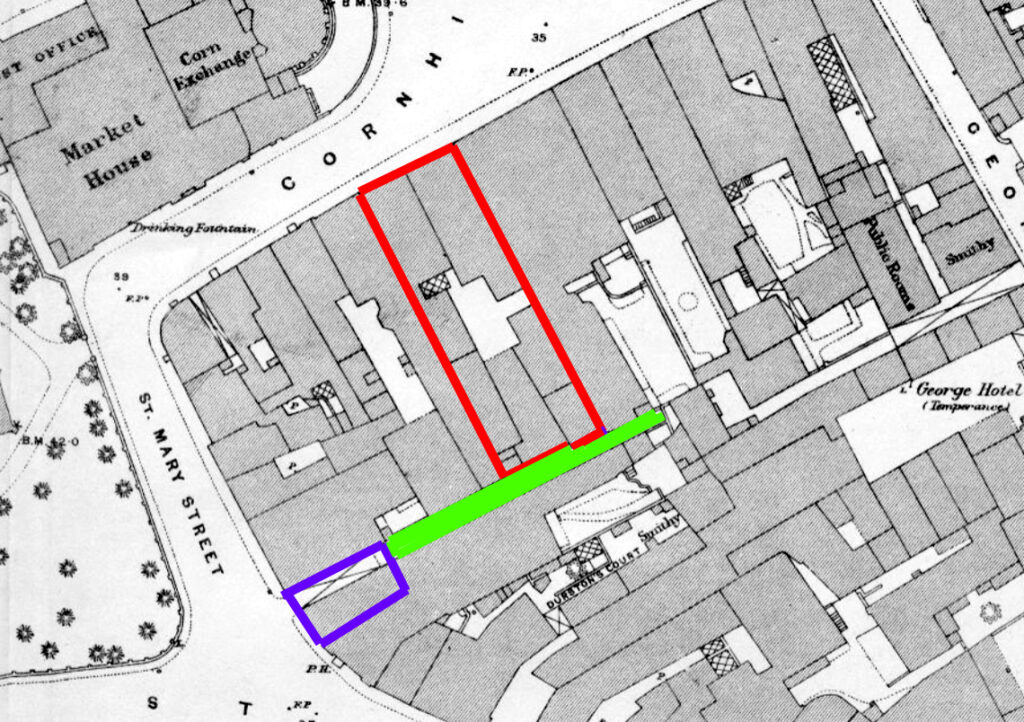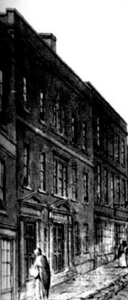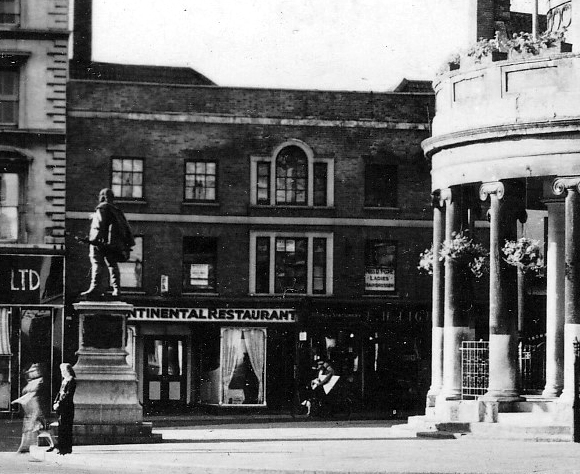Jarman’s History of Bridgwater relates how the Swan ‘was the largest inn in Bridgwater, and, indeed was one of the most famous in the county’ (p.75). Sadly although several writers note the Swan’s importance, we know relatively little about it. The name is probably a heraldic reference to the royal house of Lancaster, possibly Henry V, who used a swan with a crown around its neck as an emblem.

The Swan Inn is first mentioned in 1553 in a rental list of properties within the town which were part of the estate of Bridgwater Castle. The rent had been 4 iron horseshoes and 38 iron keys per year, although this was converted at this time into a cash sum of four pence (Lawrence, p.31). In 1639 the Swan was part of the borough property, although an inquisition of 9 April 1639 could not determine how it had come into the town’s ownership. It was worth 50 shillings a year, and held from Henry Harvey (who held the lordship of the castle) for the four pence rent. (SRO DD/BK/5/7).

Documents survive in the Somerset Heritage Centre (SRO) for the property as early as 1564. The 1656 lease was conditional rebuilding the property (SRO D/B/bw/CL/95; D/B/bw/ML/11). The main frontage faced the Cornhill, and dates to the mid-eighteenth century. The interior behind is older, and appears to have been cobbled together over the centuries, the floor levels in the upper storeys not being on the same level, with two separate roofs, suggesting that the Swan was formed of two old burgage plots in the middle ages. There was apparently a balcony overlooking the Cornhill, presumably before the façade was rebuilt to its present form. At the back was a yard and stables, then a passage led to St Mary Street, under a building called the Cupola, which was 10 feet tall and 8 feet wide. The passageway and a row of buildings along its south side were not part of the property of the Swan, although the Inn has a right of access through (SRO D/B/bw/1705).

The Inn still seems to have been operating as late as 1819 (SRO A/AVX/2). The building is recorded in John Chubb’s illustration of the Cornhill, which dates to the 1790s. Throughout the eighteenth century there are many accounts in the Bridgwater Borough Archives of the council carrying out maintenance at the property. A new stable was built between 1773-5 (SRO D/B/bw/1522).
A cryptic mention of the Swan comes in 1682, when ‘Mr Zaccheus Hooper, of the Swanne, built his brick house upon the Vicarage garden wall, for acknowledgement of which two shillings the annum is expected to be paid to the incumbent vicar’. (Jarman, p.75) This probably does not mean the Swan abutted the vicarage, more likely the owner of the Swan owned another property in Little St Mary Street.
In the eighteenth century the Inn was a convenient place for the government Leather Office for collecting Land and Window taxes, as well as a court for bankruptcy cases (Lawrence 132). Legal agreements would often be drawn up in the Inn, such as the plan for horse races to be held at Chilton Common in 1739 (SRO DD/S/WH/332). From 1764 the Swan was the meeting place of a masonic lodge, known from 1778 as the Lodge of Perpetual Friendship, although they moved to the Lamb Inn from 1790 (John Lane, Masonic records 1717-1894, 1895, p.18).
The Inn’s demise is hard to understand, given its standing, but since the town was not short of inns, the Globe in Eastover being especially prominent at the time, it is not necessarily surprising. In any event, a few years later came the establishment of the Royal Clarence Hotel directly opposite on the Cornhill, which provided much larger, state-of-the-art facilities.
Building works behind the building in 1884 ‘bought to light several interesting relics, including a brass token, representing the cost of the journey between Bridgwater to London.’ (Jarman, p.75).
In about 1900 the east side of the building was occupied by Taylor and Purnell’s, while the west was Lipton’s Tea merchants. In 1950 the east side of the building was used as the Continental Restaurant, while the west was F.H. Light’s. By the 1980s it had become Birmingham Midshire Building Society and since the first ecade of the 2000s is now a pub, called the Cornhill.



Misc Mentions of Lease Holders
1553 John Colvords (SRO D/B/bw/1814)
1626 John Buckland (Williams, Bridgwater Inns Past & Present, p.54)
1682 Zaccheus Hooper (Jarman, p.75)
1742 Mrs Mary Yates, lessee of Swan Inn (SRO D/B/bw/1800)
1741-1784 George Beake (Williams, p.54)
(1744 Elizabeth Goodfellow, servant at the Swan in Bridgwater (SRO DD/SAS/H112/24/15))
1785-1790 Mrs. Beake (advert– widow of George Beake – Williams, p.54)
1792-1804 Nathaniel Tucker, Ironmonger (lease and 1835 Corporation Property List)
1804-1819 Sarah Tucker, Nathaniel’s widow (1835 Corporation Property List)
After 1819 the property was no longer used as an inn.
From 19 February 1819 the lease was divided between John Nicholls, Linen Draper of Bridgwater, who was married to Sarah Tucker, Nathaniel and Sarah’s daughter and Charles Tucker, gentleman, son of Nathaniel and Sarah (1835 Corporation Property List)
